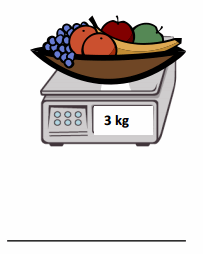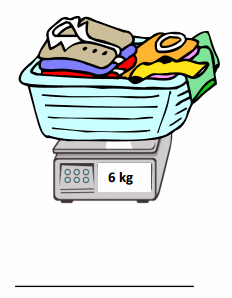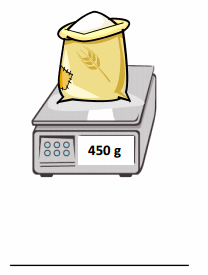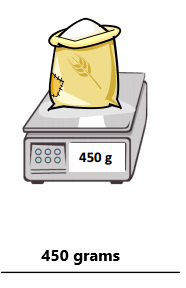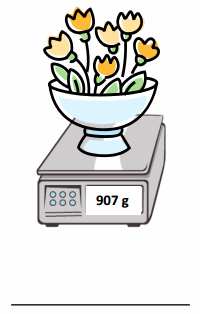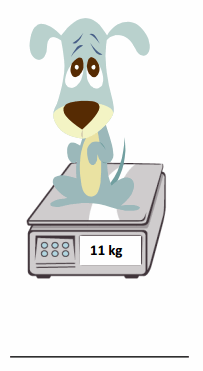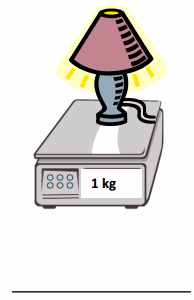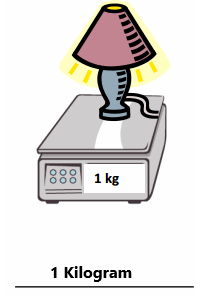Engage NY Eureka Math 3rd Grade Module 2 Lesson 6 Answer Key
Eureka Math Grade 3 Module 2 Lesson 6 Problem Set Answer Key
Question 1.
Illustrate and describe the process of making a 1-kilogram weight.
Answer:
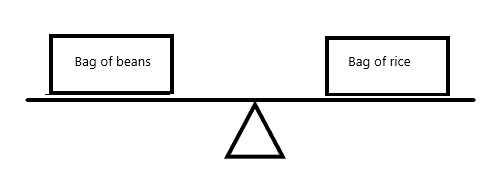
Explanation:
I put a 1 kg beans on one side of the pan balance.Then i filled a bag of rice on the other side of pan until the pan gets balanced.
Question 2.
Illustrate and describe the process of decomposing 1 kilogram into groups of 100 grams.
Answer:

Explanation:
I drew a ten-frame on the 1kg bag of rice.Each part of frame is 100g.There are 10 hundreds which is equal to 1000g.
Question 3.
Illustrate and describe the process of decomposing 100 grams into groups of 10 grams.
Answer:
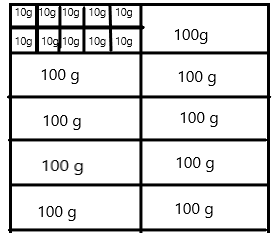
Explanation:
I erased one of the 100g labels and drew a new ten frame .Each part of ten frame is 10g.There are 10 tens which is equal to 100g.
Question 4.
Illustrate and describe the process of decomposing 10 grams into groups of 1 gram.
Answer:

Explanation:
I erases one of the 10g labels and drew a new ten frame.Each part of new frame is 1g.There are 10 ones which is equal to 10 g.
Question 5.
Compare the two place value charts below. How does today’s exploration using kilograms and grams relate to your understanding of place value?
| 1 kilogram | 100 grams | 10 grams |
1 gram |
|
Thousands |
Hundreds | Tens |
Ones |
Answer:
Todays exploration with weights relates to place value because 1 tens is equal to 10 ones, 1 hundreds is equal to 10 tens and 1 thousands is equal to 10 hundreds.The weights we used today also worked in the same way.10g is ten 1g, 100g is ten 10g and the 1000g is ten 100g.
Eureka Math Grade 3 Module 2 Lesson 6 Exit Ticket Answer Key
Ten bags of sugar weigh 1 kilogram. How many grams does each bag of sugar weigh?
Answer:
Explanation:
If I drew a ten frame on the 1kg bag of sugar, Each part of ten frame is 100g.So, If ten bags of sugar weigh 1kg then each bag of sugar weighs 100g.
Eureka Math Grade 3 Module 2 Lesson 6 Homework Answer Key
Question 1.
Use the chart to help you answer the following questions:
| 1 kilogram | 100 grams | 10 grams |
1 gram |
a. Isaiah puts a 10-gram weight on a pan balance. How many 1-gram weights does he need to balance the scale?
Answer:
As we know one 10g is equal to ten 1g.So, needs to put ten 1g to balance the scale.
b. Next, Isaiah puts a 100-gram weight on a pan balance. How many 10-gram weights does he need to balance the scale?
Answer:
As we know one 100g is equal to ten 10g.So, needs to put ten 10g to balance the scale.
c. Isaiah then puts a kilogram weight on a pan balance. How many 100-gram weights does he need to balance the scale?
Answer:
As we know one 1000g is equal to ten 100g.So, needs to put ten 100g to balance the scale.
d. What pattern do you notice in Parts (a–c)?
Answer:
I noticed here the pattern of place values.1 tens is equal to 10 ones, 1 hundreds is equal to 10 tens and 1 thousands is equal to 10 hundreds.In the same way one 10g is ten 1g, one100g is ten 10g and the one 1000g is ten 100g
Question 2.
Read each digital scale. Write each weight using the word kilogram or gram for each measurement.
